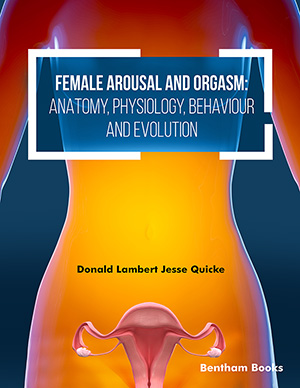Abstract
Background: Depressive symptoms are one of the main clinical features of the cerebral small-vessel disease (CSVD). However, the pathogenesis of depressive symptoms of CSVD has not been fully studied, and a lack of effective diagnostic methodseffective diagnostic methods exists. Recently, the emerging body of evidence regarding exosomes has rendered them potentially key players in the neuropsychiatric disease theragnostic. This study’s aim was to investigate serumexosome proteomic expression in CSVD patients with depressive symptoms and to screen and analyze potential biomarkers for clinical diagnosis.
Methods: Serum samples were collected from 36 CSVD patients, including 18 cerebral small-vessel disease (CSVD+D) patients with depressive clinical manifestations and 18 cerebral small-vessel disease patients that did not present depression-related clinical manifestations (CSVD-D). This investigation employed tandem mass tag (TMT) combined with mass spectrometry for sample detection and quantitative analysis of proteins. The differential proteins with significant dysregulated expression levels in patient plasma exosomes were screened and analyzed through bioinformatics techniques.
Results: This investigation focused on a global collection of 659 quantifiable proteins. Compared to the CSVD-D group, 7 up-regulated and 30 down-regulated proteins were identified in the CSVD+D group (P < 0.05). Gene ontology (GO) enrichment analyses revealed proteomic expression profile dysregulations within serum exosomes in patients with depression, such as desmosomes and keratins, rendering them as potential biomarkers. Kyoto encyclopedia of genes and genomes (KEGG) database investigations revealed the differentially expressed proteins to be highly aggregated within the estrogen signaling pathway.
Conclusion: This investigation pioneered TMT proteomic evaluation of serum exosomes within CSVD patients suffering from depression and reveals the shifts in proteomic expression profiles by serum exosomes within such patients. This study identified several important molecular / signal pathway abnormalities related to depression. These results provide a possible means to further clarify the pathogenesis of depressive symptoms of cerebrovascular disease and its diagnosis and treatment in the future.
Keywords: Proteomic, exosome, cerebral small-vessel disease, depression, estrogen, desmosomes, keratins.
[http://dx.doi.org/10.1212/WNL.0000000000007142] [PMID: 30770431]
[http://dx.doi.org/10.1038/nrdp.2018.3] [PMID: 29446769]
[http://dx.doi.org/10.1212/WNL.0000000000000882] [PMID: 25230999]
[http://dx.doi.org/10.1038/s41398-019-0514-6] [PMID: 31383842]
[http://dx.doi.org/10.5498/wjp.v6.i3.283] [PMID: 27679767]
[http://dx.doi.org/10.1038/mp.2015.65] [PMID: 26033239]
[http://dx.doi.org/10.1146/annurev-physiol-021014-071641] [PMID: 25293529]
[http://dx.doi.org/10.1016/j.bbamem.2016.02.011] [PMID: 26874206]
[http://dx.doi.org/10.1002/jcb.26599] [PMID: 29236313]
[http://dx.doi.org/10.1038/nmeth.3144] [PMID: 25357241]
[http://dx.doi.org/10.1016/j.tins.2019.02.007] [PMID: 30926143]
[http://dx.doi.org/10.1038/s41582-018-0126-4] [PMID: 30700824]
[http://dx.doi.org/10.1242/dev.128.6.929] [PMID: 11222147]
[http://dx.doi.org/10.1038/emboj.2012.142] [PMID: 22588081]
[http://dx.doi.org/10.1073/pnas.1510291112] [PMID: 26195764]
[http://dx.doi.org/10.1111/gbb.12287] [PMID: 26915960]
[http://dx.doi.org/10.3389/fnmol.2018.00103] [PMID: 29674952]
[http://dx.doi.org/10.1155/2020/8861903] [PMID: 33293948]
[http://dx.doi.org/10.1016/j.expneurol.2014.12.005] [PMID: 25496840]
[http://dx.doi.org/10.1007/s11920-018-0963-2] [PMID: 30221332]
[http://dx.doi.org/10.1016/j.yhbeh.2015.06.010] [PMID: 26122294]
[http://dx.doi.org/10.1038/s41598-017-01035-5] [PMID: 28465511]
[http://dx.doi.org/10.1016/j.jsbmb.2020.105795] [PMID: 33246157]
[http://dx.doi.org/10.1016/j.psyneuen.2017.05.016] [PMID: 28544903]
[http://dx.doi.org/10.1210/er.2016-1007] [PMID: 27196727]
[http://dx.doi.org/10.1186/s12974-018-1246-x] [PMID: 30001721]
[http://dx.doi.org/10.1038/nature21029] [PMID: 28099414]
[http://dx.doi.org/10.1016/j.jsbmb.2014.02.018] [PMID: 24607811]
[http://dx.doi.org/10.1016/j.brainres.2019.146536] [PMID: 31676226]
[http://dx.doi.org/10.1016/j.ijbiomac.2021.05.172] [PMID: 34052271]
[http://dx.doi.org/10.1074/mcp.M114.046904] [PMID: 26091700]
[http://dx.doi.org/10.1038/cddis.2015.21] [PMID: 25695600]
[http://dx.doi.org/10.1160/TH10-09-0591] [PMID: 21544310]
[http://dx.doi.org/10.7754/Clin.Lab.2019.190312] [PMID: 31625351]
[PMID: 27528403]
[http://dx.doi.org/10.1002/cyto.a.22726] [PMID: 26243460]
[http://dx.doi.org/10.3727/096368915X687778] [PMID: 25839228]
[http://dx.doi.org/10.1515/hsz-2015-0257] [PMID: 26859499]
[http://dx.doi.org/10.1016/j.physbeh.2018.04.029] [PMID: 29698729]
[http://dx.doi.org/10.1016/j.physbeh.2020.113140] [PMID: 32828030]
[http://dx.doi.org/10.1016/j.foodres.2019.108906] [PMID: 32247482]
[http://dx.doi.org/10.3389/fnbeh.2020.592388] [PMID: 33250724]
[http://dx.doi.org/10.3390/ijms22010045] [PMID: 33375205]





























